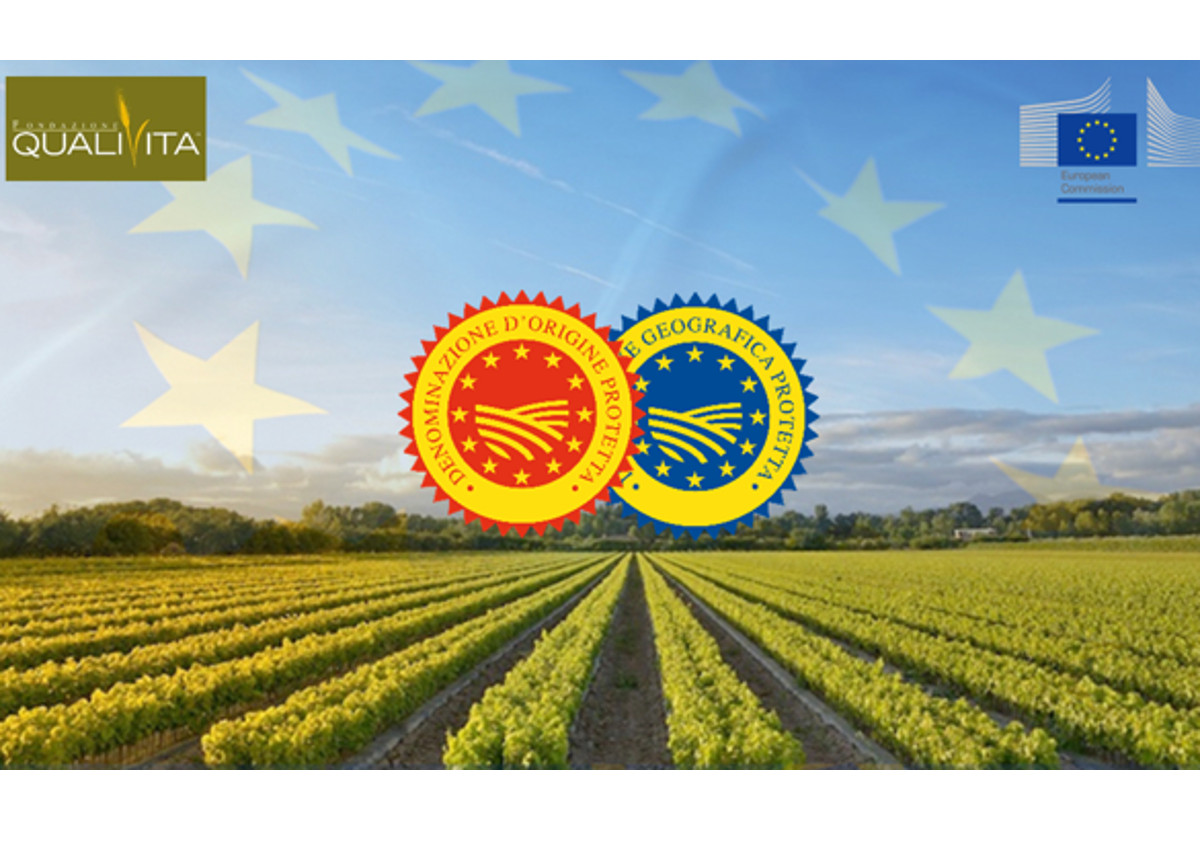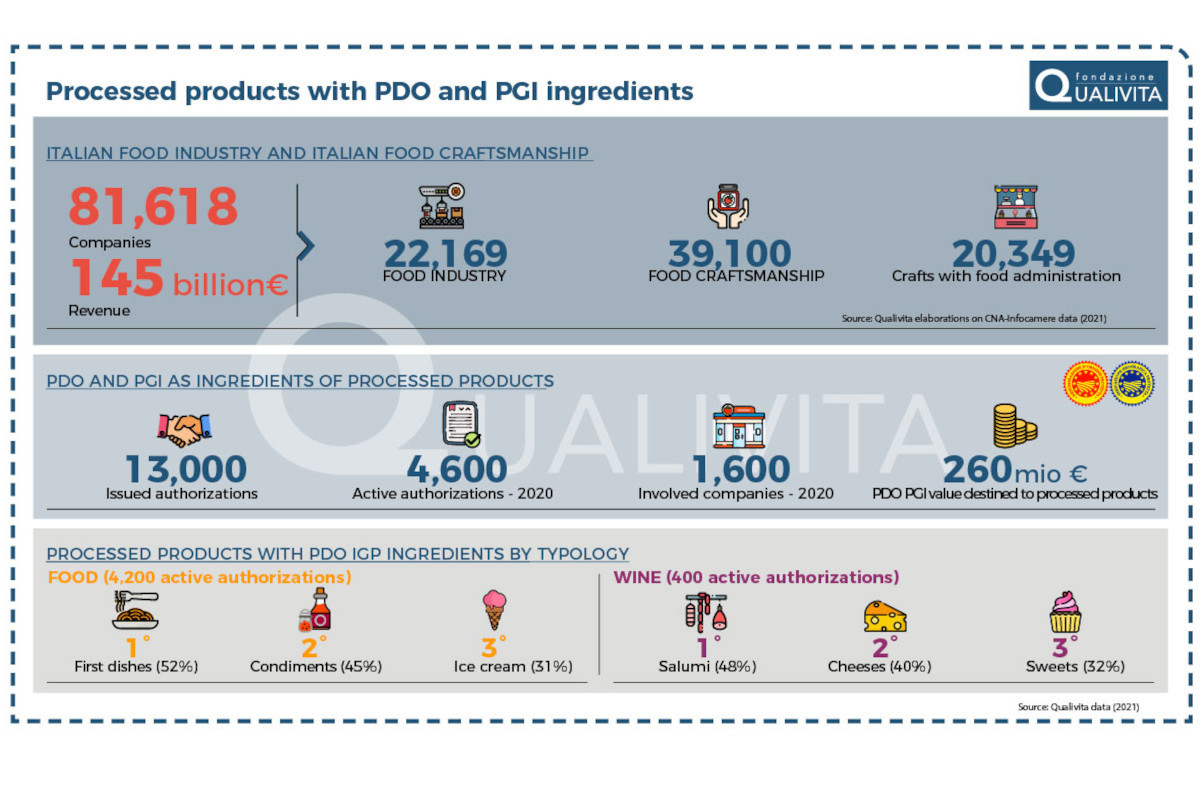
What happens when the Italian “PDO economy” meets the world of food industry and craftsmanship? This is the question that Fondazione Qualivita (an Italian foundation created 21 years ago in Siena with the aim of enhancing and protecting quality European agri-food productions) has tried to answer with its latest in-depth study on the segment of Italian processed food products that use Italian PDO and/or PGI ingredients.
Click here to discover the authentic Italian F&B products on the Italianfood.net platform
The results show that 68% of protection Consortia have granted authorization to use a Geographical Indication (GI) as an ingredient. Overall, there are 13,000 authorizations issued over the years by the Consortia and by the Italian Ministry of Agriculture, 4,600 of which active in 2020 and involving about 1,600 processing companies. On the whole, it is estimated that the value of PDO and PGI production for processed F&B products is 260 million euros, exceeding one billion euros for the food industry and craftsmanship. PDO and PGI are used above all in condiments (42% of the GIs involved) and first courses (41%), but also in cured meats (33%), and desserts (31%). These are followed by cheese and gelato (25%), jams, pizzas, and drinks (23%).
The analysis also revealed a fragmented European regulatory framework but also an Italian primacy in terms of regulation. Italy is in fact the only EU country to have introduced an authorization mechanism – in the hands of recognized Consortia – to give greater protection to GIs.

GOOD PRACTICES AND CASE HISTORIES
The presentation of Qualivita’s survey was also an opportunity to hear from representatives of Italian food companies some virtuous case histories that have seen the inclusion of PDO and PGI ingredients in products processed by large industries. From the Sammontana’s gelato with Cioccolato di Modica PGI (in addition to the ice cream with Vin santo di Chianti PDO) to Giovanni Rana’s filled pasta with Gorgonzola PDO, from My Selection recipes by McDonald’s Italy to Fanta with Arance Rosse di Sicilia PGI, etc.
WORLD LEADERSHIP
Italy is the world leader in the production of PDO and PGI foods and wines, with 840 certified quality supply chains involving 180,000 operators throughout the Peninsula for a total production of nearly 17 billion euros. Alongside this key asset of the agri-food system, there is the Italian food industry and craftsmanship: a sector with over 81,600 companies and a turnover of 145 billion euros.
ILLEGAL USES, IMITATIONS AND COUNTERFEITING
The survey also analyzed the main misuses of Italy’s GIs when used as ingredients in processed products, such as misuse of reputation, conjuring, false and misleading claims about essential qualities, lack of authorization, violation of the agreed minimum quantity requirement, and misuse of visual identity or reputation.
ADDED VALUES
“The high level of quality, the goodness and the certainty of origin are an added value of our PDOs and PGIs” – said the Italian Undersecretary for Agricultural Policies, Gian Marco Centinaio. “An added value that remains so even when PDOs and PGIs become ingredients of processed products. Moreover, an additional plus for the most famous brands, which, in turn, become a tool to make known to an increasing number of consumers the excellence of our food. At a time when there is growing consumer attention to the origin of raw materials and an increasing demand for Made in Italy products, the partnership with the food industry can increase awareness and distribution” – Mr. Centinaio said.
